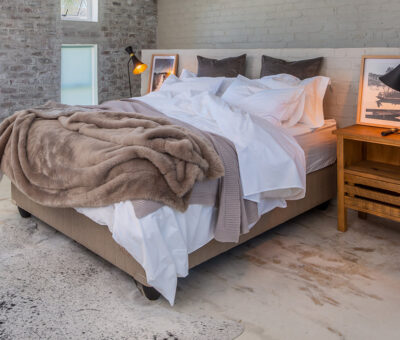DDL: The Ultimate Guide to Choosing the Right Bedside Table
Bedside tables are more than just a spot to drop your phone or stash your favourite book—they’re an essential piece of bedroom furniture that combines functionality and style. Whether your bedroom is a cosy retreat or a sleek modern space, finding the right nightstand can elevate both its aesthetics and practicality.
Here’s a comprehensive guide to help you navigate the options and choose nightstands that truly fit your needs and design goals.
1. Size Matters: Getting the Proportions Right
Before diving into aesthetics, start with dimensions. A nightstand that’s too small or too large can throw off the room’s balance.
- Height: Aim for a nightstand that’s level with the top of your mattress or slightly taller (5–10 cm). This makes it easy to reach for your glass of water or alarm clock without straining.
- Width: The size of your bed influences the width of your nightstand:
- Twin Bed: 43–51 cm wide.
- Queen Bed: 51–66 cm wide.
- King Bed: 61 cm or more.
A good rule of thumb is to ensure the nightstand feels proportional to the bed—no tiny tables next to king-sized beds!
2. Style & Aesthetics: Complement, Don’t Match
Your nightstand should harmonize with the overall style of your bedroom without being a carbon copy of the other furniture.
- Upholstered Bed: Pair with natural wood nightstands for warmth and contrast.
- Wood Bed: Break up the wood tones with metal, painted finishes, or even acrylic for a lighter, airier feel.
- Modern Spaces: Go for clean lines and sleek materials like metal or glass.
- Rustic or Farmhouse Bedrooms: Embrace textures like reclaimed wood or distressed finishes.
The goal is to create a cohesive look that feels curated rather than overly coordinated.
3. Storage: Think About Your Needs
Consider how you’ll use your nightstand. Are you a minimalist, or do you need plenty of storage?
- Drawers: Ideal for stashing away clutter—think chargers, remotes, or personal items.
- Shelves: Great for displaying books, baskets, or decorative accents.
- Open vs. Closed Storage: Open storage adds a sense of lightness, while closed storage helps keep the space tidy.
Choose a design that reflects your habits and keeps essentials within arm’s reach.
4. Balance & Symmetry: Matching vs. Mismatched
One of the biggest questions when choosing nightstands is whether to go for a matching pair.
- Matching Nightstands: These create balance and symmetry, especially in traditional or formal designs.
- Mismatched Nightstands: Perfect for eclectic spaces or when functionality differs (e.g., one side doubles as a desk). To maintain cohesion:
- Keep heights similar within an inch or two.
- Coordinate finishes, colors, or materials.
- Use wall-mounted sconces or artwork to unify the look.
Experiment with asymmetry to add character without sacrificing harmony.
Contact: DDL Design & Décor Lab.
You might also like...
-
Blankets & Bliss: In Search of Comfort with Linen Drawer

Winter’s tip-toe arrival brings crisp mornings, breathy windows, and an unmistakable craving for cocoon-worthy comfort. As the Highveld wraps itself in fog and the Winelands ...
-
The Mattress Warehouse: Seasonal Refresh – Cosy Up Your Home for Autumn

As the crisp air of autumn sets in, it’s the perfect time to refresh your home with warm tones, layered textures, and cozy comforts. At The ...
-
Naturelle Beds – How to Stay Cool On The Warmest Nights

Air-conditioner, fans, wet towels… Staying cool on a hot summer’s night can be cumbersome. Luckily, Naturelle Beds offers a much easier – and more sustainable ...
-
Sleep: The Secret to a Restful Sanctuary with Sloom

As the air turns cooler and the evenings stretch longer, your bedroom should evolve into a sanctuary of warmth and relaxation. Thoughtfully layering textures, tones, ...


























